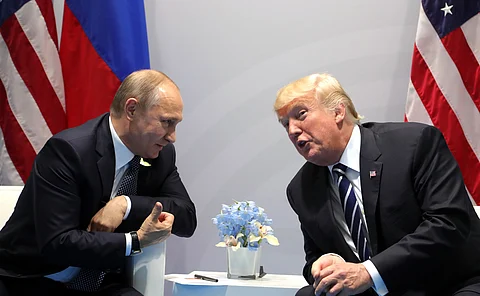

US President Donald Trump will meet Russian President Vladimir Putin in Alaska on August 15, 2025, marking their first face-to-face discussion since 2019.
The summit aims to address the ongoing Russia-Ukraine conflict, with potential implications for US-Russia relations and broader geopolitical dynamics.
Amid rising tensions in the post-Soviet space, from the Caucasus to Moldova, the meeting could signal a shift in global alignments.
However, skepticism persists about achieving a lasting resolution, particularly given the exclusion of Ukrainian President Volodymyr Zelenskyy from the talks.
Alaska’s selection as the summit location carries historical and strategic weight.
Once part of the Russian Empire until its sale to the US in 1867, Alaska symbolizes a bridge between East and West.
Its proximity to Russia, just 55 miles across the Bering Strait, and its Arctic significance make it a fitting venue for high-level talks.
The choice also sidesteps legal issues, as the US is not bound by the International Criminal Court’s warrant against Putin for alleged war crimes.
Some analysts, like Ilya Budraitskis, view the summit as a “symbolic victory for Russia,” signaling Putin’s reintegration into global diplomacy despite ongoing conflicts.
The Russia-Ukraine war dominates the summit’s agenda, with Trump previously promising a swift resolution.
Recent proposals suggest territorial concessions in Ukraine’s Donbas region, though Zelenskyy has firmly rejected ceding land, stating, “Ukrainians will not gift their land to the occupiers.”
Beyond Ukraine, US mediation in the Armenia-Azerbaijan peace deal, signed on August 8, 2025, highlights Washington’s broader strategy in the post-Soviet space.
This deal, benefiting Türkiye and Azerbaijan, raises concerns about similar US-led efforts in Georgia and Moldova, where “frozen conflicts” like Transnistria could escalate tensions with Russia.
The summit’s scope extends beyond Ukraine, touching on arms control treaties, Middle East dynamics, and Arctic interests.
Russian analyst Alexey Nechayev emphasized Moscow’s focus on a new European security framework, viewing the Ukraine conflict as part of a larger NATO-Russia rift.
Meanwhile, Trump’s threats of sanctions and tariffs, including recent 50% tariffs on India for purchasing Russian oil, reflect economic pressure tactics.
However, analysts like Budraitskis suggest the summit may yield only symbolic gestures, such as temporary halts in Russian airstrikes, rather than substantive peace agreements, leaving the US-Russia divide and regional tensions unresolved.